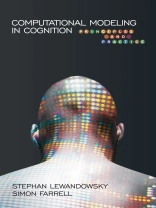An accessible introduction to the principles of computational and mathematical modeling in psychology and cognitive science
This practical and readable work provides students and researchers, who are new to cognitive modeling, with the background and core knowledge they need to interpret published reports, and develop and apply models of their own. The book is structured to help readers understand the logic of individual component techniques and their relationships to each other.
表中的内容
Preface
1. Introduction
1.1 Models and Theories in Science
1.2 Why Quantitative Modeling?
1.3 Quantitative Modeling in Cognition
1.4 The Ideas Underlying Modeling and Its Distinct Applications
1.5 What Can We Expect From Models?
1.6 Potential Problems
2. From Words to Models: Building a Toolkit
2.1 Working Memory
2.2 The Phonological Loop: 144 Models of Working Memory
2.3 Building a Simulation
2.4 What Can We Learn From These Simulations?
2.5 The Basic Toolkit
2.6 Models and Data: Sufficiency and Explanation
3. Basic Parameter Estimation Techniques
3.1 Fitting Models to Data: Parameter Estimation
3.2 Considering the Data: What Level of Analysis?
4. Maximum Likelihood Estimation
4.1 Basics of Probabilities
4.2 What Is a Likelihood?
4.3 Defining a Probability Function
4.4 Finding the Maximum Likelihood
4.5 Maximum Likelihood Estimation for Multiple Participants
4.6 Properties of Maximum Likelihood Estimators
5. Parameter Uncertainty and Model Comparison
5.1 Error on Maximum Likelihood Estimates
5.2 Introduction to Model Selection
5.3 The Likelihood Ratio Test
5.4 Information Criteria and Model Comparison
5.5 Conclusion
6. Not Everything That Fits Is Gold: Interpreting the Modeling
6.1 Psychological Data and The Very Bad Good Fit
6.2 Parameter Identifiability and Model Testability
6.3 Drawing Lessons and Conclusions From Modeling
7. Drawing It All Together: Two Examples
7.1 WITNESS: Simulating Eyewitness Identification
7.2 Exemplar Versus Boundary Models: Choosing Between Candidates
7.3 Conclusion
8. Modeling in a Broader Context
8.1 Bayesian Theories of Cognition
8.2 Neural Networks
8.3 Neuroscientific Modeling
8.4 Cognitive Architectures
8.5 Conclusion
References
Author Index
Subject Index
About the Authors












